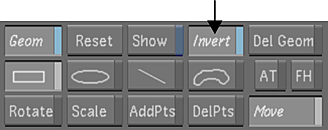- Lustre User Guide
- What's New in Lustre 2025
- What's New in Lustre 2024
- What's New in Lustre 2023.2
- What's New in Lustre 2022
- What's New in Lustre 2021.2
- Lustre Workflow
- Interoperability Workflows in Lustre
- Connected Colour Workflow
- Project Management
- Basics
- Calibration and Working Space
- Browsing for Footage
- Transcoding
- Conform
- Editing
- Playing, Viewing, and Sorting Shots
- Removing Dust
- Removing Grain
- Repositioning Images
- Input LUTs
- Colour Grading Basics
- Primary Colour Grading
- Colour Grading RGB and Hue Curves
- Secondary Colour Grading
- Accessing Secondary Grading Menus
- Secondary Layers
- Colour Grading Secondaries
- About Geometries
- Accessing the Geometry Controls
- Drawing Basic Geometries
- Drawing Free-Form Geometries
- Modifying Geometries
- Adding a Split Screen
- Adding and Deleting Axes
- Changing the Priority Order of Geometries
- Showing and Hiding Geometries
- Inverting Geometries
- Deleting Geometries and Resetting Secondaries
- Linking Geometries across Secondary Layers
- Creating a Secondary by Keying a Range of Colours
- Saving and Loading Key Presets
- Working with Mattes
- Shape Tracker
- Animating the Point Tracker
- Loading Tracker and Stabilizer Data from Autodesk Applications
- Loading Garbage Mask Setups from Autodesk Applications
- Mastering High Dynamic Range Content Using Dolby Vision™
- Creating Lustre Sparks Effects
- Animation
- Stereoscopy
- Rendering
- Media Export (Linux Only)
- Video Capture and Video Playout
- Audio
- Working with Wiretap
- Keyboard Shortcuts
- XML in Lustre
- The Tangent CP100 Control Surface
- Lustre Control Surfaces

